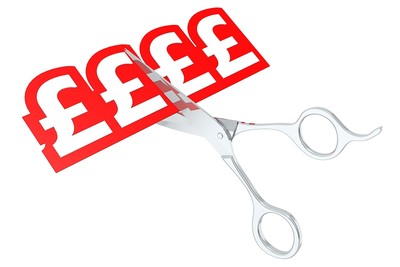 The ultimate goal when placing any bet is, of course, to see your selection, or selections, come home in front and collect a positive return on your stake.
The ultimate goal when placing any bet is, of course, to see your selection, or selections, come home in front and collect a positive return on your stake.
But is it possible to back a winner and still end up with less than you started? That might well sound illogical, but, somewhat annoyingly, there are indeed scenarios – plural – which may lead to this rather disappointing outcome.
How Betting Returns are Calculated
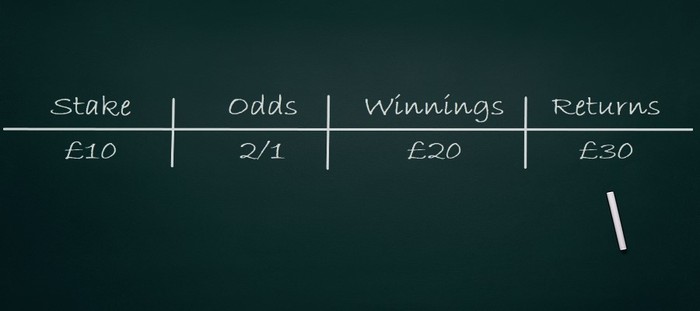
Betting returns consist of two parts – your stake and your winnings. With a winning bet, you always get your stake back (in simple terms, though there is more to it than that, as we will explain), so in theory the answer to the titular question should be a straight no.
However, let us get back to explaining how returns are calculated. To use a simple example, a £10 bet on a 2/1 winner would return a total of £30, consisting of £20 in winnings plus your £10 initial stake. So, if your total returns are always equal to your stake plus your winnings, how can you ever end up with a total payout less than your initial stake?
There are three main reasons why this may occur, namely, Each Way Bets, Dead Heats, and Multiples. We should point out straight away that all of these three scenarios are perfectly legitimate, with no skulduggery afoot on the part of the bookmakers. Here we take a look at each in turn.
Each Way Bets
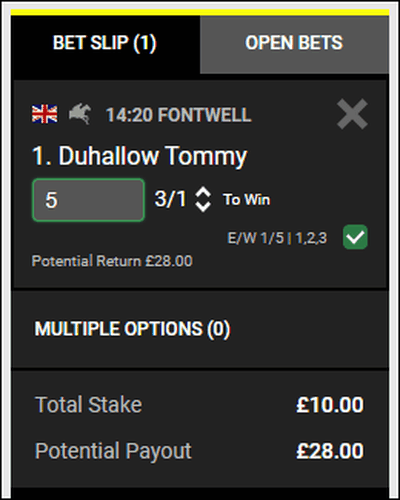 One of the most common misconceptions amongst novice punters is that a successful each-way bet will always produce a return of more than the total stake. Sadly, this is not the case, but why?
One of the most common misconceptions amongst novice punters is that a successful each-way bet will always produce a return of more than the total stake. Sadly, this is not the case, but why?
First, let’s break down what an each-way bet actually is. When placing an each-way bet, you are placing not one bet, but two wagers. The first bet is on the horse to win the race and will be settled at the full listed odds. The second part is a bet on the horse to finish in the placed positions and will be settled at a fraction of the full price – usually either 1/4 or 1/5.
Of course, if the horse wins the race outright, i.e., there is no dead heat involved (more on those later), your returns will always be more than your total. For example, a £5 each way bet on a 3/1 shot under 1/5-odds each-way terms will settle as follows.
- Win Bet: £5 at 3/1 = £20
- Place Bet: £5 at 1/5 of 3/1 i.e. 3/5 = £8
- Total Returns: £28
- Overall Outcome: +£18
Sticking to the above example, only this time, the horse does not win but still manages to finish in the placed positions. In this instance, we would receive zero returns from the win part of the bet, thus losing £5. However, we would still receive the £8 place returns – the end result being a £2 loss on our total stake.
The key fact to remember with an each-way bet is that if the horse is only placed under 1/5 odds each-way conditions, you will break even at 5/1. Anything above 5/1 and you will make an overall profit. Anything below 5/1, and you will incur a loss. Under 1/4 odds conditions, the break-even odds threshold is 4/1.
Dead Heats
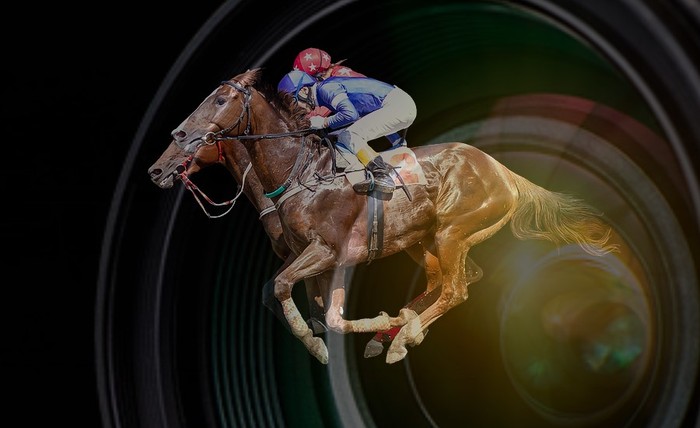
A lengthy photo finish check at the end of a horse race can often indicate a dead heat
Dead heats are most common in horse racing and greyhounds but also crop up frequently with each way wagers in sports offering several placed positions, such as golf. To understand how a dead heat may result in you receiving a total return of less than your initial stake, we first need to look at how a dead heat bet is settled.
In horse racing, a dead heat is where two (or more) horses cannot be separated, even with the use of photo-finish technology. Due to advances in that technology, they are rarer than they used to be. However, they still occur and in such a scenario the horses that dead heat effectively share first and second (in the event of a two-horse dead heat) and, indeed, this is how prize money for the race is divided.
Example 1: 5/1 Dead Heat
Consider a £10 win bet on a 5/1 shot who goes on to finish in a dead heat for first place. Under standard win conditions, you expect a total return of £60. However, from the bookmaker’s point of view, your horse is considered to have finished both first and second. This is perfectly fair when you think about it, as the horse to finish immediately behind the dead-heating winners will be declared the third-place finisher in the race.
Sticking to the logic that your horse finished both first and second, it therefore follows that you have half won and half lost on your £10 win bet. The obvious way to settle this is to split the stake in two – settling £5 as a loser and the other £5 as a winner at 5/1, resulting in a total return of £30. That still represents a £20 overall profit, but the problem arises anytime the price of your horse falls below even money.
Example 2: Evens or Shorter Dead Heats
Sticking to our £10 staking example: £10 on a 1/1 (evens) shot, which finishes in a dead heat, will see you exactly break even. £5 of your stake is settled as a loser, and £5 settled as an even money winner = £10 returns. No harm done.
However, evens represents the lowest price at which you will receive your total stake back in a dead heat. Say, for example, that your dead heat winner is priced at 1/2. Here, your £10 stake would be split as follows: £5 settled as a loser, and £5 settled as a winner at 1/2 = Total Returns of just £7.50, resulting in a £2.50 loss on the bet. So, once again, whilst you have landed a winner, you have still, unfortunately, come out losing financially.
Example 3: Three-Way+ Dead Heats
Whilst relatively rare in modern horse racing, dead heats do happen, but three-way dead heats (or more) are very, very uncommon. However, such dead heats involving three or more players are relatively common in the golf each-way markets.
Say, for example, that a golf tournament paid out at 1/4 the odds each way on the top eight finishers (many betting sites now regularly offer enhanced place terms). Let us then imagine that your £10 each way 12/1 selection finished in a five-way tie for eighth. Initially you may expect a payout of £40, as 1/4 of 12/1 = 3/1, and £10 at 3/1 = £40. That would leave you £20 to the good overall and celebrating a win.
However, from the bookmaker’s point of view, your selection is considered to have finished 8th, 9th, 10th, 11th, and 12th. With only one of those five positions covered by the top eight finishers each-way terms, you’re each-way bet is four parts a loser and only one part a winner. All of a sudden things don’t look so good.
A £10 each-way bet in the above scenario would be calculated as follows. The £10 win part of your bet obviously loses. The £10 each-way portion will then be split into five £2 bets. Four of these bets are considered to have been placed on 9th, 10th, 11th, and 12th placed finishers and, therefore, lose. That leaves one £2 bet placed on the 8th-place finisher. Total returns will equal £2 at 1/4 of 12/1, i.e., 3/1, resulting in a total return of just £8 on your £10 each way bet and total stake of £20.
Multiple Bets
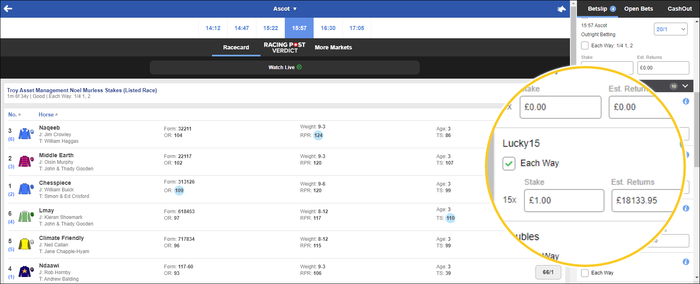
Bets like the Lucky 15 are known as complex multiples
Another bet type that commonly returns less than the total outlay is the ever-popular multiple. We aren’t referring to straight accumulators here – where even picking seven winners out of eight is worth nothing if the eighth leg lets you down – but rather the widespread combination multiple bets such as Yankees, Lucky 15s, and so on.
Take a Lucky 15 bet as an example. This bet requires you to make four selections. These selections are then combined in all possible permutations, resulting in 4 singles, 6 doubles, 4 trebles, and 1 fourfold, for a total of 15 bets. Each of these wagers has its own stake, such that a 50p Lucky 15 costs £7.50 in total.
Whether or not you profit from this bet will be related to how many of your four selections win and, of course, the odds involved. With many firms offering a double-the-odds bonus for only one winner, a single winner at 7/1 will often see you break even. However, if betting at short prices, it is possible to back three out of four winners and still achieve a loss on the bet.
For example, consider the following Lucky 15:
- Horse A wins at odds of 1/2
- Horse B wins at odds of 1/3
- Horse C wins at odds of 1/2
- Horse D loses
The 15 bets contained within the Lucky 15 would then settle as follows:
- £1 Single on Horse A – Returns: £1.50
- £1 Single on Horse B – Returns: £1.33
- £1 Single on Horse C – Returns £1.50
- £1 Single on Horse D – Loser
- £1 Double on Horses A and B – Returns: £2.00
- £1 Double on Horses A and C – Returns: £2.25
- £1 Double on Horses A and D – Loser
- £1 Double on Horses B and C – Returns: £2.00
- £1 Double on Horses B and D – Loser
- £1 Double on Horses C and D – Loser
- £1 Treble on Horses A, B and C – Returns: £3.00
- £1 Treble on Horses A, B and D – Loser
- £1 Treble on Horses A, C and D – Loser
- £1 Treble on Horses B, C and D – Loser
- £1 Fourfold on Horses A, B, C and D – Loser
- TOTAL Returns – £13.58
As we can see, despite being correct in 75% of our predictions, we would still have incurred a loss of £1.42 on our total £15 outlay. This might seem unreasonable but given the odds of the three winners it should not be a major surprise.
Next to Lucky 15s, Yankees are among the most popular combination multiple bets. Again consisting of four selections, a Yankee is made up of 6 Doubles, 4 Trebles, and 1 Fourfold for a total of 11 bets (effectively a Lucky 15 minus the singles).
With a Yankee, you must hit at least two winners to receive any returns at all. Even one 25/1 winner combined with three losers will result in a grand return of zero. However, two winners won’t always be enough to edge into profit. Say, for example, you include four selections, all priced at 2/1, in a £1 Yankee. If only two of the four wins, you will be left with just a £1 double on two 2/1 shots, resulting in a total return of £9 and a £2 loss on your £11 outlay.
The above are just two examples of an endless list of permutations which may result in a multiple bet returning less than the total stake. Common sense applies here, in that the larger the price of your selections, the fewer you need to win to secure a profit in a full cover bet such as a Lucky 15. If backing at odds-on, you may need all your selections to oblige to come out in front. When weighing up your Lucky 15s, etc., a number of odds calculator sites are available online, enabling you to figure out your potential returns for 1, 2, 3, 4, or more winners.
A Note on Rule 4s

Rule 4s are applied to correct odds following a non-runner or non-runners
Whenever a horse is withdrawn from a race, a Rule 4 deduction is applied to any bets already placed. This deduction is expressed as a pence per pound value and ranges from 90p per £1 for a withdrawn horse at odds of 1/9 or shorter to just 5p in the pound for a withdrawn runner at odds between 10/1 and 14/1. If a withdrawn horse has odds greater than 14/1, no Rule 4 deduction will apply.
Many bemoan Rule 4 deductions, but they are a perfectly reasonable sanction to protect the bookmakers and ensure that all markets are priced fairly in relation to the runners that actually take part in the race. If you are affected by a Rule 4 deduction, this will always result in a reduction to your returns. However, this does not mean you will receive less than your original stake should you back a winner.
Rule 4 deductions are only applied to the winnings portion of a bet and not to the stake. Say, for example, you place a £10 bet at 2/1, which duly goes and wins. Standard returns would see you receive £30 back, consisting of £20 in winnings plus your £10 stake. If, however, the even money favourite withdrew from the race after you placed your bet, a 45p Rule 4 would apply. In this instance, you would still receive your £10 stake back, but your £20 in winnings would be reduced to £11 as a result of the 45p in the £1 deduction, resulting in total returns of £21. Even if the withdrawn favourite had been priced at 1/9 and incurred the maximum 90p Rule 4, you would still receive your full £10 stake, plus £2 in winnings, for a total return of £12. A small overall win, but a win, nonetheless.
The only occasion where a Rule 4 deduction may force your total returns below your total stake is if your selection is involved in a dead heat, as outlined above, or was an each way pick, again as per the above.
